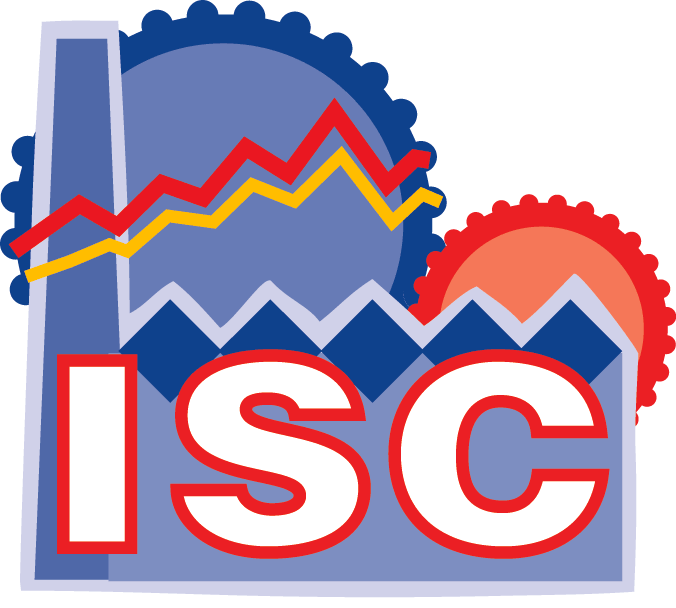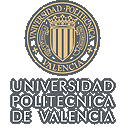
ISC'2003
June 9-12, 2003 - UPV, Valencia, Spain
Conference Tutorials
Conference Tutorials
Tutorials can be proposed in the following three categories:
T1- Introductory Tutorials
T2- State of the Art Tutorials
T3- Software and Modelware Tutorials
Tutorial proposals should be emailed to Philippe.Geril@UGent.be
TUTORIAL 1
Lookahead, Rollback and Lookback: Quest
for Parallelism in Discrete Event Simulation
by Boleslaw Szymanski and Gilbert Chen, Rensselaer Polytechnic Institute, Troy, USA
If you are interested in attending this tutorial, send an email to tutorial1. Registrations for this tutorial end on May 5th, 2003
TUTORIAL 2
Modeling and Simulation of Complex Cell Spaces

|
The Cell-DEVS formalism was defined in order to attack these problems. Cellular automata are defined using discrete variables for time, space and system states. Instead, Cell-DEVS is based on the DEVS formalism, a continuous time technique. The goal of Cell-DEVS is to build discrete-event cell spaces, improving their definition by making the timing specification more expressive. DEVS models are described using a hierarchical and modular specification, and different modeling formalisms were successfully mapped as DEVS (Petri Nets, Queuing Networks, Finite State Machines, etc.). Therefore, we can now build cellular models that can interact with others described using different modeling techniques. DEVS and Cell-DEVS formalisms were implemented in a modeling and simulation tool (CD++), which was successfully used to develop different types of systems: biological (ecological models, heart tissue, ant foraging systems, fire spread, etc.), physical (diffusion, binary solidification, excitable media, surface tension, etc.), artificial (robot trajectories, traffic problems, heat seeking devices, etc.), and others. The techniques we used enabled execution of the models using simulation engines which are completely independent from the modeling aspects. We have developed different kinds of simulation engines (centralized, in parallel or distributed environment and real-time) , which were used to execute the same models. We also have developed different visualization approaches to improve the analysis of model execution. |
| In this tutorial, we will introduce the main characteristics of the DEVS and Cell-DEVS formalisms, and will show how to model complex cell spaces in an asynchronous environment. We will focus in showing how the application of these techniques can improve model definition, reducing the development times of software applications developed to study this kind of systems. We will also focus in describing how to create models that can be executed automatically in a parallel environment without any modifications to the original models, or user intervention. We will present different examples of application, and discuss open research issues in this area. |  |
10 min. Presentation and Overview
60 min. Introduction to DEVS formalism.
10 min. Break
30 min. Explanation of modelling and simulation using DEVS and related tools.
60 min. Introduction to the Cell-DEVS formalism and Parallel Cell-DEVS techniques.
10 min. Break
40 min. Specification of models using Cell-DEVS and related tools.
10 min. Group discussion. Review and wrap-up.
Gabriel A. Wainer received the degree of M.Sc. in Computer Science (1993) and the Ph.D. degree (1998, summa cum laude) of the Universidad de Buenos Aires, Argentina, and Université d'Aix-Marseille III, France. He is Assistant Professor at the SCE Dept., Carleton University (Ottawa, Canada, 2000-). He was Assistant Professor at the Computer Sciences Dept. of the Universidad de Buenos Aires, Argentina (1997-2000), being a research scholar in that department since 1993. He was also a Visiting Research Scholar at ACIMS (University of Arizona, Tucson, AZ) and Invited Professor at the Polytechnique de Marseille, France. He published more than 60 articles in the field of operating systems, real-time systems and discrete-event simulation. He is Associate Editor of the Transactions of the SCS. He was the PI of several research projects and a reviewer for different international conferences, journals, and research projects. He is author of a book on real-time systems, and one on discrete-event simulation (in Spanish). Prof. Wainer was a member of the Board of Directors of the SCS. He is the chair of the Standards Committee of the SCS, and a coordinator of a group on DEVS standardization. He is also the Associate Director of the Ottawa Center of The McLeod Institute of Simulation Sciences. His current research interest is related with modelling methodologies and tools, modelling and simulation of cellular models, parallel execution of models and real-time simulators.
If you are interested in attending this tutorial, send an email to tutorial2. Registrations for this tutorial end on May 5th, 2003


















